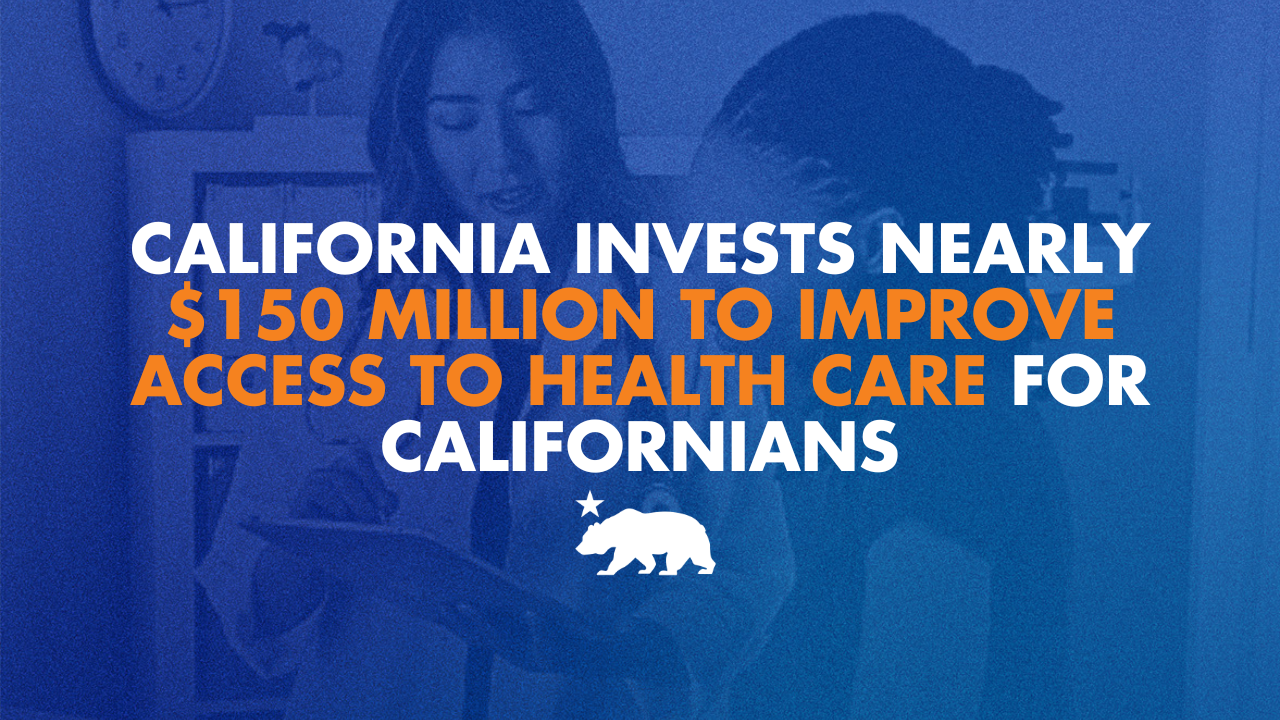California invests nearly $150 million to improve access to health care for Californians – California State Portal | CA.gov

California’s Health Care Investment: A Strategic Alignment with Sustainable Development Goals
Executive Summary
On November 18, 2025, the State of California announced a significant investment of $145.5 million to enhance community-based health services. This funding, part of the Providing Access and Transforming Health (PATH) initiative, is allocated to 153 organizations across all 58 counties. The initiative directly supports the United Nations Sustainable Development Goals (SDGs), with a primary focus on SDG 3 (Good Health and Well-being) and SDG 10 (Reduced Inequalities) by transforming the state’s health care system to be more accessible, equitable, and effective for all populations, particularly those historically underserved.
Program Analysis: The PATH CITED Initiative
Core Objectives and SDG Integration
The awards are administered through the Capacity and Infrastructure, Transition, Expansion, and Development (CITED) stream of the PATH initiative. The program’s design is fundamentally aligned with several key SDGs:
- SDG 3 (Good Health and Well-being): The central goal is to foster a whole-person care model, moving beyond traditional medical treatment to include vital resources that promote overall well-being.
- SDG 10 (Reduced Inequalities): A core tenet of the initiative is to empower local providers who serve historically under-resourced communities, thereby strengthening the foundation of an equitable health care delivery system.
- SDG 1 (No Poverty) & SDG 11 (Sustainable Cities and Communities): By funding services such as housing support and in-person care coordination, the initiative addresses critical social determinants of health that contribute to poverty and community instability.
- SDG 17 (Partnerships for the Goals): The initiative represents a robust partnership between the state government and over 2,200 community providers, demonstrating a collaborative model for achieving public health objectives.
Financial Allocation and Statewide Impact
The financial commitment and scope of the PATH initiative demonstrate a large-scale effort to achieve these development goals.
- Current Investment: $145.5 million awarded to 153 organizations.
- Geographic Reach: Comprehensive coverage across all 58 California counties.
- Total Initiative Funding: Since its launch in 2022, the five-year PATH initiative has awarded over $1.66 billion.
- Service Delivery: The program has successfully delivered over one million services, with a notable 120% year-over-year increase in access for children and youth in early 2025.
Outcomes and Long-Term Viability
Advancing Health Equity and System Efficiency
The initiative’s focus on underserved populations directly contributes to SDG 10 by reducing health disparities. As stated by DHCS Director Michelle Baass, the program is “strengthening the foundation of a more equitable, person-centered delivery system.” This targeted approach ensures that investments create lasting change by connecting Medi-Cal members to the specific care and support they need.
Sustainable Economic Impact
The investments are projected to yield significant long-term savings for California’s Medi-Cal program, creating a more sustainable health care financing model. By focusing on preventative and community-based care, the initiative aims to achieve the following outcomes:
- Reduction in avoidable emergency department visits.
- Decrease in hospitalizations.
- Lower utilization of long-term care facilities.
This strategy not only improves health outcomes in alignment with SDG 3 but also ensures the fiscal sustainability and efficiency of the state’s public health system.
Analysis of the Article in Relation to Sustainable Development Goals
1. Which SDGs are addressed or connected to the issues highlighted in the article?
- SDG 3: Good Health and Well-being: The article’s central theme is the transformation of California’s healthcare system to make it more effective, affordable, and accessible for everyone. It details a $145.5 million investment in community-based health services, directly aligning with the goal of ensuring healthy lives and promoting well-being for all at all ages.
- SDG 10: Reduced Inequalities: The initiative specifically targets “historically under-resourced communities” and aims to create a “more equitable, person-centered delivery system.” By funding organizations committed to serving these populations, the program directly addresses the goal of reducing inequality within and among countries by ensuring vulnerable groups have access to essential services.
- SDG 17: Partnerships for the Goals: The article describes a large-scale collaboration between the state government (Governor’s office, DHCS) and numerous local organizations. The PATH initiative has awarded funds to “153 organizations across all 58 counties” and over “2,200 community providers” in total, exemplifying a public-civil society partnership to achieve common goals.
2. What specific targets under those SDGs can be identified based on the article’s content?
- Target 3.8: Achieve universal health coverage, including financial risk protection, access to quality essential health-care services and access to safe, effective, quality and affordable essential medicines and vaccines for all. The article’s focus on reimagining “health care into a system that supports everyone – and that everyone can access” is a direct reflection of this target. The funding supports “specialized, community-based services,” “in-person care coordination,” and “housing support,” which are all components of comprehensive and quality essential health services.
- Target 10.2: By 2030, empower and promote the social, economic and political inclusion of all, irrespective of age, sex, disability, race, ethnicity, origin, religion or economic or other status. The initiative’s commitment to serving “historically underserved populations” and empowering “local providers, many of whom serve historically under-resourced communities” directly supports this target. By ensuring equitable access to healthcare, the program promotes the social inclusion of marginalized groups.
- Target 17.17: Encourage and promote effective public, public-private and civil society partnerships, building on the experience and resourcing strategies of partnerships. The entire PATH initiative is a model of this target. The state government is providing significant funding (“$1.66 billion to over 2,200 community providers”) to enable local, non-governmental organizations to deliver care, demonstrating a large-scale public-civil society partnership.
3. Are there any indicators mentioned or implied in the article that can be used to measure progress towards the identified targets?
-
For Target 3.8 (related to Indicator 3.8.1: Coverage of essential health services): The article provides several quantifiable metrics that can serve as indicators of progress. These include:
- The delivery of “over a million services to those who need them.”
- A “120 percent year-over-year increase in early 2025” in access for children and youth.
- The reduction of “avoidable emergency department visits, hospitalizations, and long-term care use,” which measures the effectiveness and preventative nature of the services provided.
-
For Target 10.2 (related to Indicator 10.2.1: Proportion of people…by…status): While not providing income data, the article implies progress through indicators focused on outreach to specific populations:
- The number of organizations funded (“153 organizations”) that are “committed to serving historically underserved populations.”
- The geographic reach of the program, covering “all 58 counties,” which suggests an effort to reduce regional inequalities in access to care.
-
For Target 17.17 (related to Indicator 17.17.1: Amount of United States dollars committed to public-private and civil society partnerships): The article explicitly states the financial scale of the partnership, which serves as a direct indicator:
- The total amount awarded through the PATH initiative: “more than $1.66 billion.”
- The specific amount of the current awards: “$145.5 million.”
- The number of partners involved: “over 2,200 community providers” and “153 organizations” in the latest round.
4. Summary Table of SDGs, Targets, and Indicators
| SDGs | Targets | Indicators |
|---|---|---|
| SDG 3: Good Health and Well-being | 3.8: Achieve universal health coverage, including financial risk protection, access to quality essential health-care services… |
|
| SDG 10: Reduced Inequalities | 10.2: By 2030, empower and promote the social… inclusion of all… |
|
| SDG 17: Partnerships for the Goals | 17.17: Encourage and promote effective public, public-private and civil society partnerships… |
|
Source: gov.ca.gov
What is Your Reaction?
 Like
0
Like
0
 Dislike
0
Dislike
0
 Love
0
Love
0
 Funny
0
Funny
0
 Angry
0
Angry
0
 Sad
0
Sad
0
 Wow
0
Wow
0
















































:focal(1500,1000)/https://media.globalcitizen.org/a6/9a/a69a4720-d8a1-4715-b596-18738d03c05c/rotary_polio_hero_image.jpg?#)







/countries/sri-lanka/photo-credit---dmc-sri-lanka.tmb-1200v.jpg?sfvrsn=dc298bcc_1#)


















